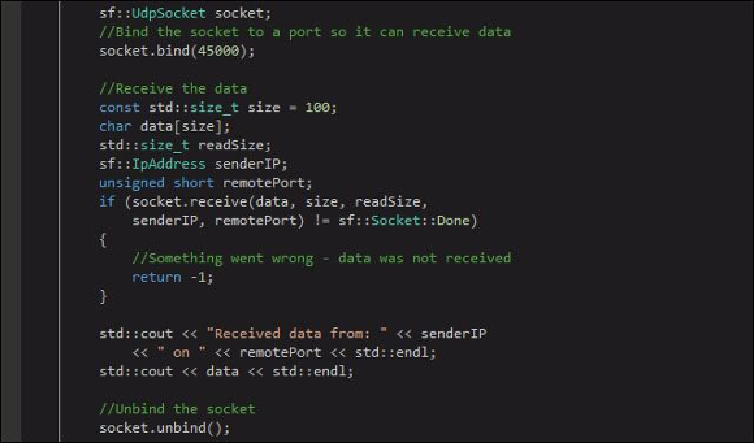Game Development Reference
In-Depth Information
This looks quite a bit different to how TCP receives packets. With UDP we do not need a
connection and thus we do not need a listener. It is sufficient to have one socket (bound to
a particular port) which can receive packets from any other socket. To see from which cli-
ent (IP address and port) the data is coming from, we have to specify
IpAddress
and
ushort
references, which are filled with the address of the sender and the port. Apart
from that, the method
UdpSocket::receive()
works in a similar way to its TCP al-
ternative — it requires an array and fills the number of read bytes in the
readSize
vari-
able. Once we have received the data with no problems, we print the address of the sender
and display the message. In the preceding example , we exit the server (unbinding the
socket) as soon as we have received something from any client.
One UDP socket has the functionality to send or receive messages to or from multiple oth-
er sockets. That makes it possible for a sender to send data to every other listening
Ud-
pSocket
in a sub-network with a single
UdpSocket::send()
call. To do that we use
the
IpAddress::Broadcast
field (255.255.255.255) as an IP address. This sends a
message to every
UdpSocket
in the sub-network, bound to the
45000
port:

